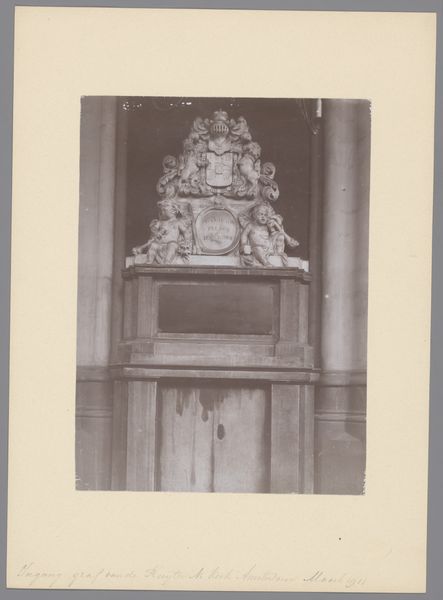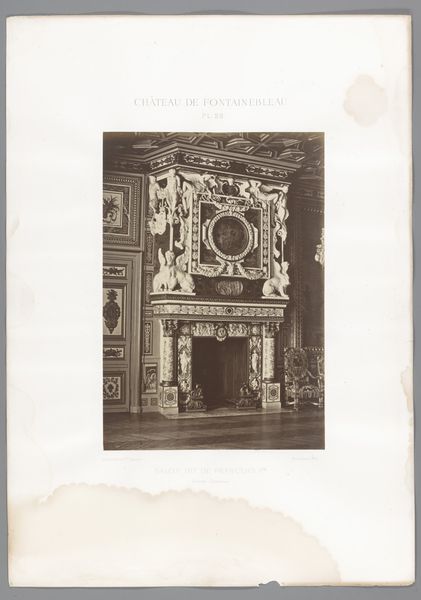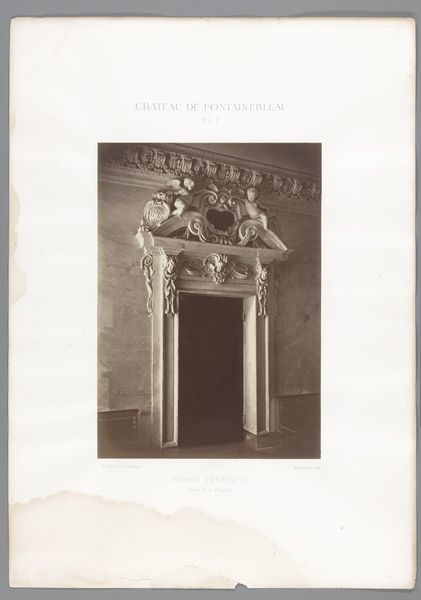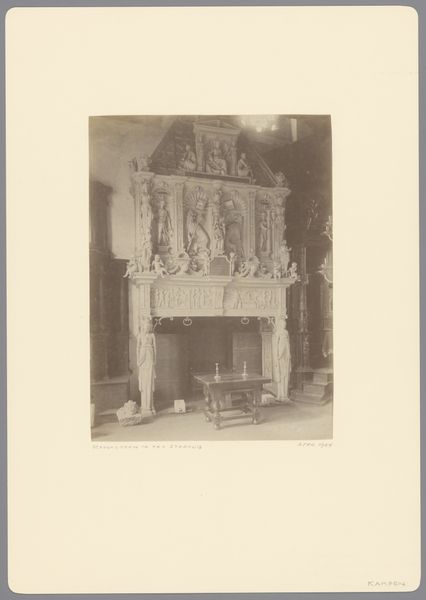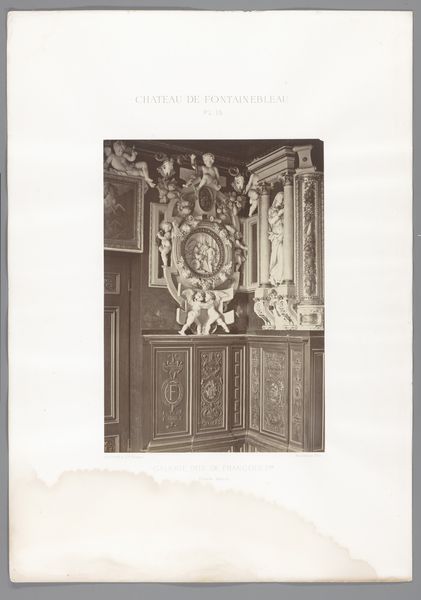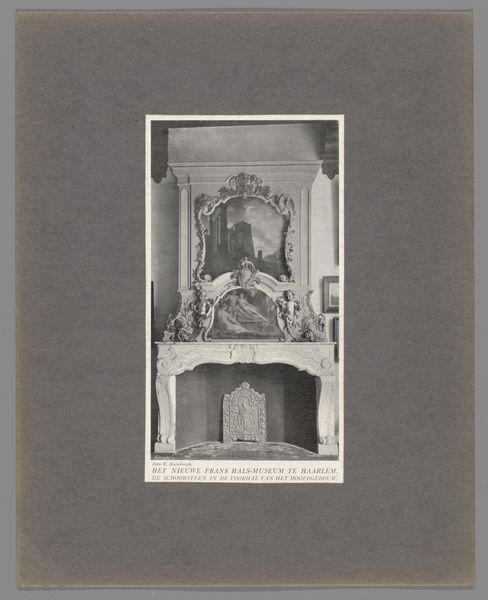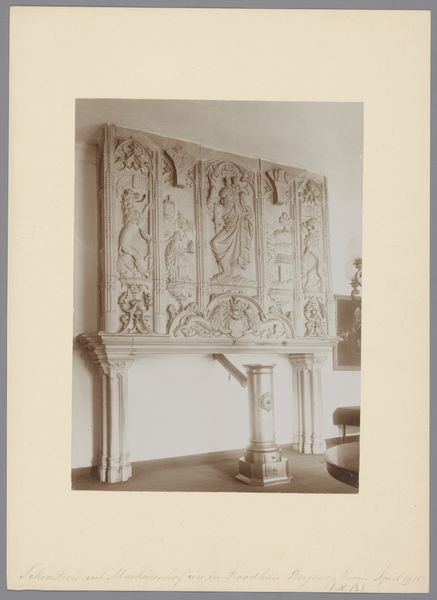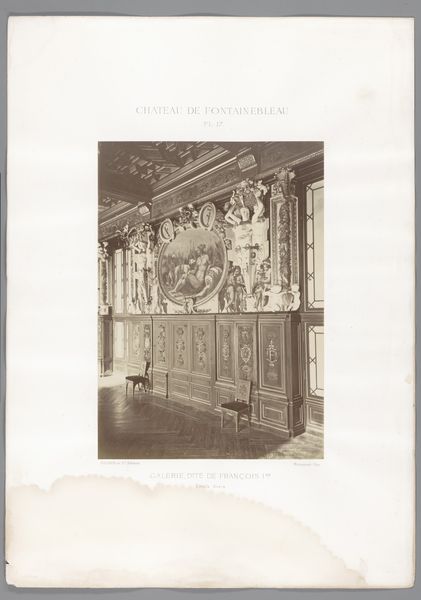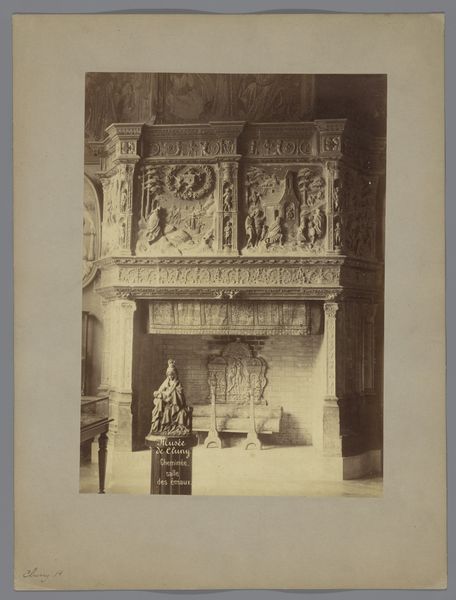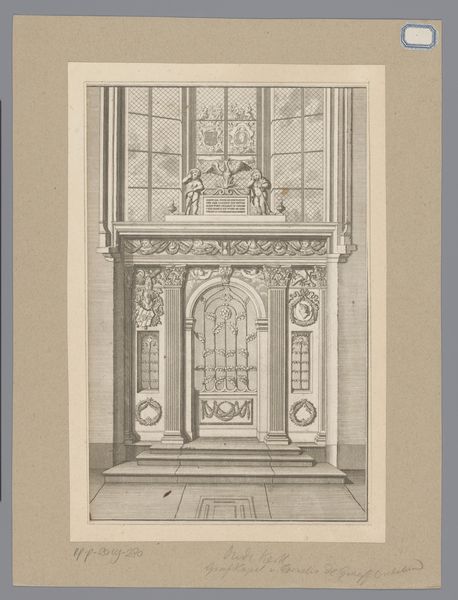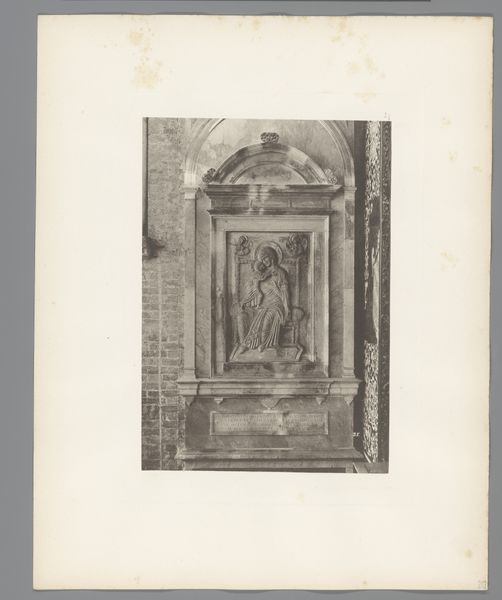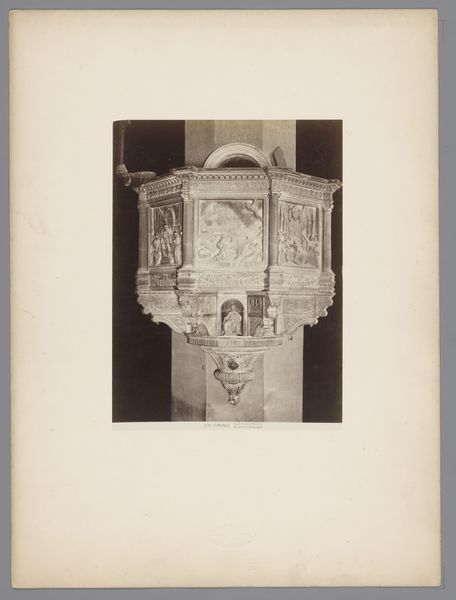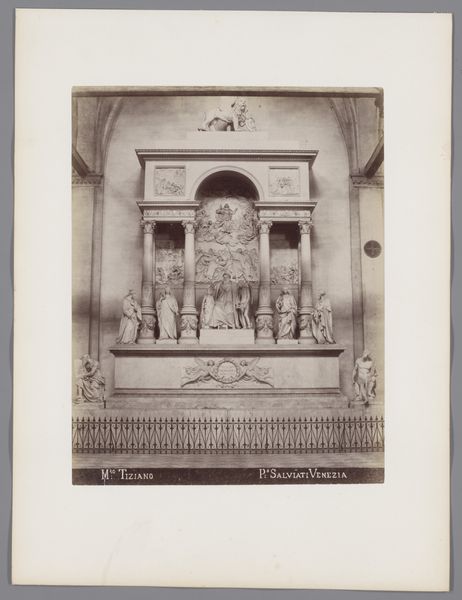
Gezicht op een marmeren haard in de Salle des Gardes van het Kasteel van Fontainebleau, Frankrijk before 1875
0:00
0:00
Dimensions: height 352 mm, width 251 mm
Copyright: Rijks Museum: Open Domain
Curator: Before us, we have a photograph by Médéric Mieusement titled "Gezicht op een marmeren haard in de Salle des Gardes van het Kasteel van Fontainebleau, Frankrijk," placing it squarely in that historical moment before 1875. It's currently held in the Rijksmuseum collection. Editor: My first impression is of stark grandeur; the monochrome palette only emphasizes the intricate carving of that enormous fireplace. There is something austere about the shot. Curator: Indeed. Mieusement, through his gelatin-silver print, captured not just a landscape, but a symbol of power. Consider the neoclassical style inherent to the hearth, itself. It’s all about historical continuity. Think of the history present in this castle and rendered accessible via photographic methods to a broader public than previously imagined. Editor: I’m most interested in what appears to be white marble. It's interesting that what appears to be a stark document also, unintentionally perhaps, displays a commentary on labor through the geological provenance and processing of the marble, coupled with its inevitable display and consumption in the French chateau. Who quarried and carved this stone, and under what social conditions? What impact did that industry have on them, or its environment? Curator: A powerful question! That neoclassical design is teeming with imagery related to authority and legacy; putti figures symbolize innocence, masks perhaps refer to theater and courtly display, and the prominent bust may even depict a member of royalty… It underscores this architectural marvel with the intention to construct, cement, and transmit an idea of power through the ages. It speaks to how visual symbols continue to resonate in time, even across artistic mediums and functions of use. Editor: Yes, exactly. We see an active production and consumption loop in the decorative detailing of this hearth. Furthermore, how does photography democratize images for distribution of cultural icons. As you’ve pointed out, architecture has to function in relationship to society, even if it is simply there to represent someone's financial means to acquire material resources. Curator: Your perspectives enrich our viewing! I had not considered how it becomes a comment on production and the image circulation afforded via photography. Editor: Likewise, examining its symbols only scratches the surface; that history requires acknowledging labor and economies.
Comments
No comments
Be the first to comment and join the conversation on the ultimate creative platform.
